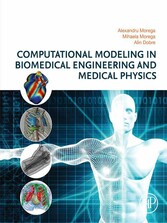Suche
Lesesoftware
Info / Kontakt

Computational Modeling in Biomedical Engineering and Medical Physics
von: Alexandru Morega, Mihaela Morega, Alin Dobre
Elsevier Reference Monographs, 2020
ISBN: 9780128178980 , 314 Seiten
Format: ePUB, PDF
Kopierschutz: DRM




Preis: 131,00 EUR
eBook anfordern 




